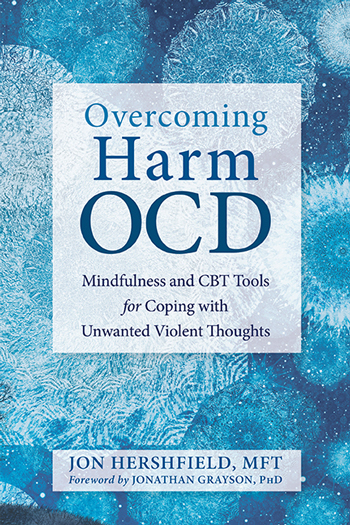If you work with clients who have obsessive-compulsive disorder (OCD), one challenge in treatment that starts on the first day is getting a complete picture of the symptoms. Many people with OCD suffer from unwanted intrusive thoughts about violent, sexual, and moral concerns that are difficult to share with a stranger (or anyone). Obsessions like these often come with a tremendous fear of being judged, shamed, or in some cases, reported to authorities. Though exposure and response prevention (ERP) is the best treatment for OCD, it’s important to recognize that for many OCD sufferers the first exposure assignment happens when you ask why they came to therapy. Here are some tips for creating an environment that invites disclosure.
Use an evidence-based assessment tool
Asking about a wide range of OCD symptoms from an evidence-based tool such as the Yale–Brown Obsessive Compulsive Scale (YBOCS) can give the more timid OCD client an opportunity to say “yay or nay” without having to volunteer their more disturbing unwanted thoughts on their own. Describing a symptom checklist as a list of common OCD concerns can make admitting those concerns seem less risky.
Position yourself as an authority on unwanted thoughts
If you specialize in OCD, comforting the client with the statement that you’ve been hearing about unwanted thoughts all day can soften the intensity of admitting them. Giving examples of some of the more creative disturbing thoughts you’ve encountered can also make for a safer space. Even if you don’t specialize in OCD, describing therapy as a place where people can plainly describe what goes on in the mind without judgment can be helpful.
Remain unimpressed
Treating OCD involves training your clients to understand that the content of one’s thoughts is not an indicator of its danger.The problem is not the thoughts themselves but the way the thinker is relating to them and trying to get certainty about them. Occasionally you’ll hear something you’ve never heard before, so be mindful of urges to raise an eyebrow or gasp! Though of course statements about committing violent or harmful acts need to be carefully assessed, your ability to model objectivity about thoughts as thoughts (not threats) starts the first time you learn of them.
Book Titles: Overcoming Harm OCD
 Jon Hershfield, MFT, is director of The OCD and Anxiety Center of Greater Baltimore in Hunt Valley, MD. He specializes in the use of mindfulness and cognitive behavioral therapy (CBT) for obsessive-compulsive disorder (OCD) and related disorders. He is author of When a Family Member Has OCD, and coauthor of The Mindfulness Workbook for OCD and Everyday Mindfulness For OCD.
Jon Hershfield, MFT, is director of The OCD and Anxiety Center of Greater Baltimore in Hunt Valley, MD. He specializes in the use of mindfulness and cognitive behavioral therapy (CBT) for obsessive-compulsive disorder (OCD) and related disorders. He is author of When a Family Member Has OCD, and coauthor of The Mindfulness Workbook for OCD and Everyday Mindfulness For OCD.

 2024 Peace Playbook: 3 Tactics to Avoid Clashes with Your Partner
2024 Peace Playbook: 3 Tactics to Avoid Clashes with Your Partner